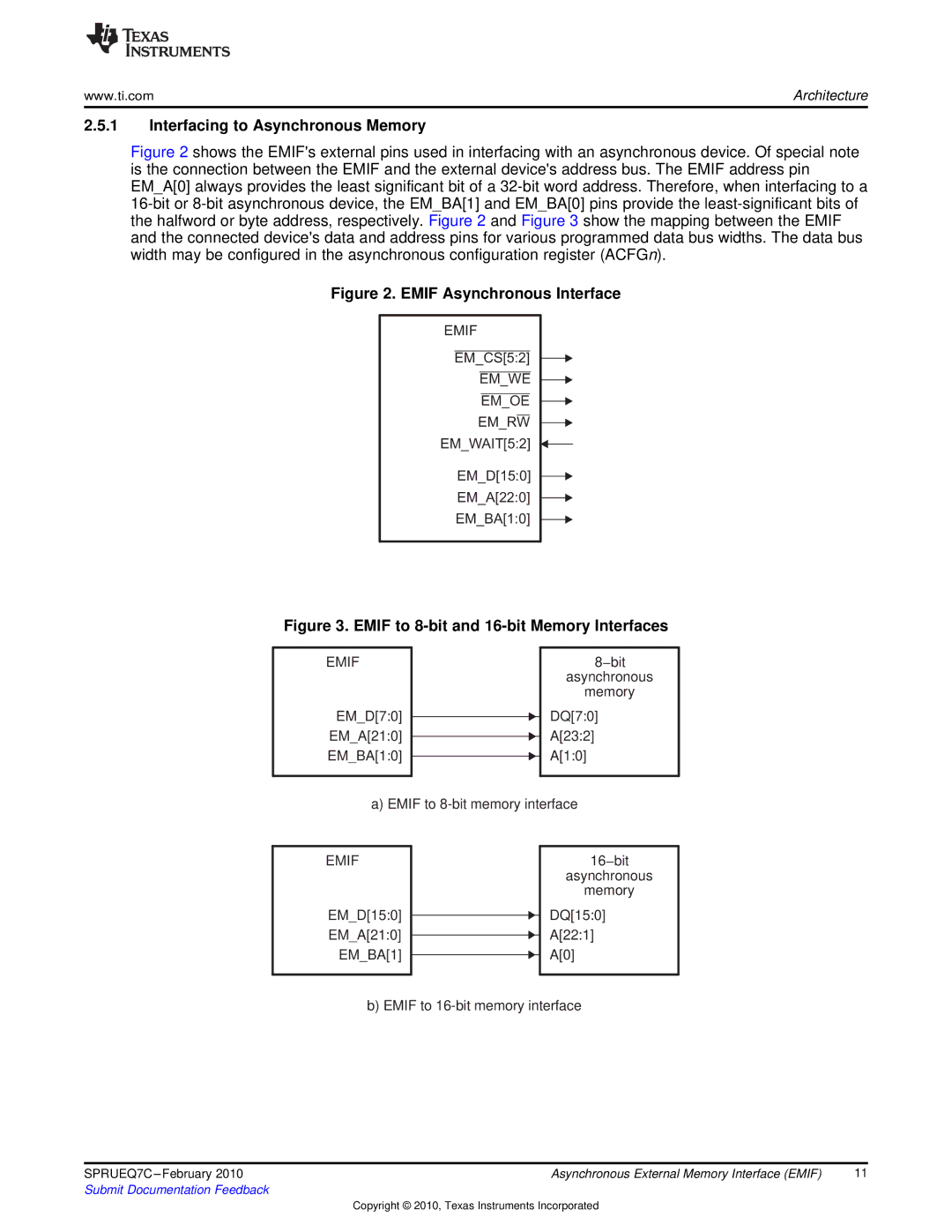
www.ti.com | Architecture |
2.5.1Interfacing to Asynchronous Memory
Figure 2 shows the EMIF'sexternal pins used in interfacing with an asynchronous device. Of special note is the connection between the EMIF and the external device'saddress bus. The EMIF address pin EM_A[0] always provides the least significant bit of a 32-bit word address. Therefore, when interfacing to a 16-bit or 8-bit asynchronous device, the EM_BA[1] and EM_BA[0] pins provide the least-significant bits of the halfword or byte address, respectively. Figure 2 and Figure 3 show the mapping between the EMIF and the connected device'sdata and address pins for various programmed data bus widths. The data bus width may be configured in the asynchronous configuration register (ACFGn).
Figure 2. EMIF Asynchronous Interface
EMIF
EM_CS[5:2]
EM_WE
EM_OE
EM_RW
EM_WAIT[5:2]
EM_D[15:0]
EM_A[22:0]
EM_BA[1:0]
Figure 3. EMIF to 8-bit and 16-bit Memory Interfaces
EMIF
EM_D[7:0] EM_A[21:0] EM_BA[1:0]
8−bit asynchronous memory
DQ[7:0]
A[23:2]
A[1:0]
a) EMIF to
EMIF
EM_D[15:0] EM_A[21:0] EM_BA[1]
16−bit asynchronous memory
DQ[15:0]
A[22:1]
A[0]
b) EMIF to 16-bit memory interface
SPRUEQ7C | Asynchronous External Memory Interface (EMIF) | 11 |
Submit Documentation Feedback |
|
|
Copyright © 2010, Texas Instruments Incorporated
